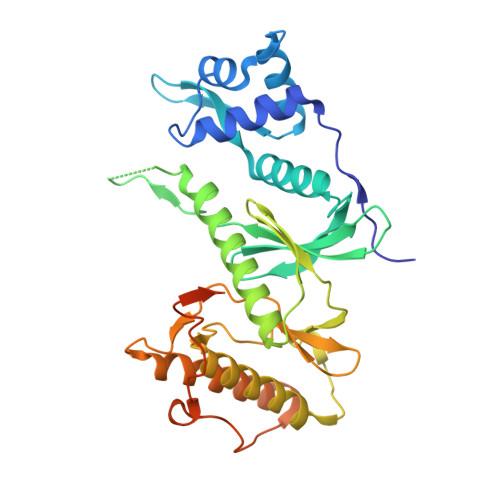Crystal structure of human RIOK2 bound to a specific inhibitor.
Wang, J., Varin, T., Vieth, M., Elkins, J.M.(2019) Open Biol 9: 190037-190037
- PubMed: 30991936
- DOI: https://doi.org/10.1098/rsob.190037
- Primary Citation of Related Structures:
6HK6 - PubMed Abstract:
The RIO kinases (RIOKs) are a universal family of atypical kinases that are essential for assembly of the pre-40S ribosome complex. Here, we present the crystal structure of human RIO kinase 2 (RIOK2) bound to a specific inhibitor. This first crystal structure of an inhibitor-bound RIO kinase reveals the binding mode of the inhibitor and explains the structure-activity relationship of the inhibitor series. The inhibitor binds in the ATP-binding site and forms extensive hydrophobic interactions with residues at the entrance to the ATP-binding site. Analysis of the conservation of active site residues reveals the reasons for the specificity of the inhibitor for RIOK2 over RIOK1 and RIOK3, and it provides a template for inhibitor design against the human RIOK family.
Organizational Affiliation:
1 Structural Genomics Consortium, Nuffield Department of Clinical Medicine, University of Oxford , Old Road Campus Research Building, Roosevelt Drive, Oxford OX3 7DQ , UK.


















